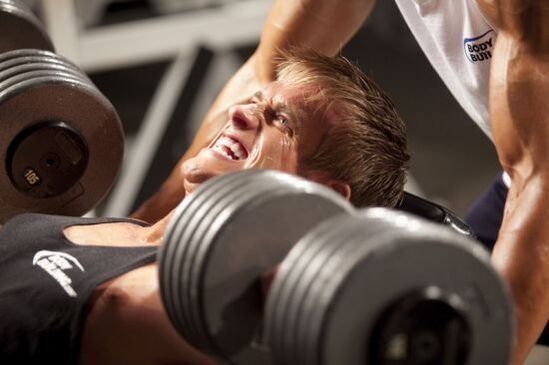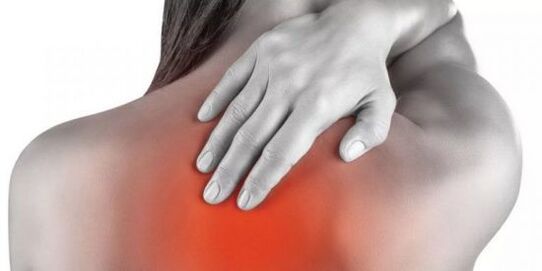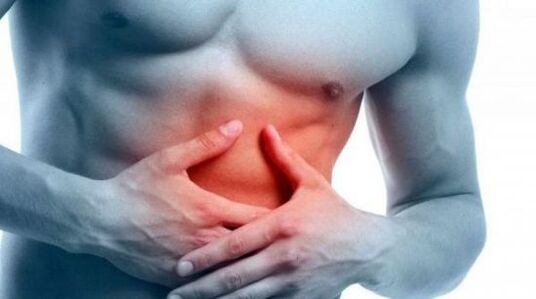
Osteochondrosis is one of the most common pathologies of the spine. It is thought to develop mainly in the neck or lower back. After all, in these places the spine is very agile and subjected to great stress. But the sedentary lifestyle of most people and the prolonged sitting at the table led to an increasing incidence of osteochondrosis of the thoracic spine. Although in many cases this pathology is not diagnosed immediately. After all, the peculiarity of thoracic osteochondrosis is that its symptoms are not specific and resemble many other pathologies.
General features
This degenerative-dystrophic disease affects the intervertebral discs of the thoracic spine. This is due to a violation of metabolic processes that leads to thinning and dehydration of the cartilage tissue. As a result, the plates collapse and lose their depreciation function as a result of physical exertion. The vertebrae, ligaments, and joints of the spine are gradually affected. Nerve fibers and blood vessels can be damaged.
This process develops slowly, making the pathology difficult to diagnose. In addition, not everyone sees a doctor right away because they do not know what the danger of chest osteochondrosis is. But without treatment, the disease can lead to serious complications. Because this part of the spine is responsible for the blood supply and innervation of the internal organs, various pathologies can develop with advanced forms of osteochondrosis of the thoracic spine. Intestinal peristalsis, work of the heart, liver and digestive system is impaired. Pancreatitis, cholecystitis, biliary dyskinesia may occur. But most often complications appear in the spine. In addition to disc herniation and intercostal neuralgia, spinal cord compression, spondylosis, sciatica, and postural disorders may occur.
Osteochondrosis of the thoracic spine is common in both men and women. Its appearance does not even depend on age, although it was previously thought that degenerative-dystrophic diseases are common only in the elderly. But modern youth are increasingly suffering from osteochondrosis due to poor nutrition and a sedentary lifestyle.
It is believed that the most common osteochondrosis is the cervix. Often, the pathology also occurs in the lumbar region. This is due to the special structure of the skeleton. In the thoracic region, the spine is less mobile because it is associated with the ribs and sternum.
The intervertebral discs are thinner here and the vertebrae are closer together. But this section is less sensitive to injuries and other external influences as part of the load is taken over by the ribs and chest.
Osteochondrosis usually appears at the level of the vertebrae 7-11. In this case, the intervertebral discs are primarily affected. Most often, 1-2 segments of the spine are affected. But sometimes polysegmental osteochondrosis develops in which multiple plates are destroyed simultaneously. Rarely, the pathology occurs on its own at this stage, usually in combination with lesions of the cervical or lumbar spine. In this case, the symptoms are more pronounced, making it easier to diagnose the disease.
A peculiarity of chest osteochondrosis is that back pain is rare after exercise, such as when it is localized in the cervical or lumbar spine. The pathology is initially confused with heart or lung disease. After all, the pain is often localized in the chest, with shortness of breath, nausea, and chills. But the manifestations of chest osteochondrosis are not very clear, so patients do not always go to the doctor in the initial stage. Because of this, the pathology progresses.

Development of disease
The danger of chest osteochondrosis is that it is "disguised" for other diseases. Pathology develops slowly, rarely occurring in patients in the initial stages. Osteochondrosis begins with thinning of the intervertebral disc. The seed flattens, the skin cracks and dries out, and the vertebrae get closer together. There is usually no major discomfort at this stage, only mild muscle tension. If the disease is detectable, it can be completely cured by restoring the condition of the cartilage discs.
But in general, the progression of osteochondrosis continues. An inflammatory process can start in the surrounding soft tissues, and the joint capsules suffer. The mobility of the spine is reduced and the vertebrae may move. If increased physical activity continues, microcracks appear on the vertebrae due to friction with each other. At this time there is a feeling of tightness in the chest, pain with any movement of the upper body.
In the third stage of osteochondrosis, the intervertebral discs become very thin, protrusions and hernias appear. The mobility of the spine is almost completely limited. Osteophytes begin to form in the vertebrae. This stage is characterized by pronounced radical syndrome as the nerve fibers are damaged. In this case, the work of the internal organs is severely disrupted. In most cases, the patient will see a doctor at this time and begin treatment. Failure to do so can lead to disability and complete immobility when the spinal cord is compressed.
The final stage of osteochondrosis is characterized by complete destruction of the plates and loss of their function. The bone tissue in the vertebrae begins to collapse, causing the mobility of the spine to deteriorate completely. All vegetative and radical symptoms of thoracic osteochondrosis are clearly expressed.

The development of chest osteochondrosis is wavy. It is usually a chronic process that progresses slowly with little inconvenience. Increased fatigue and weakness may occur. And when exposed to external factors, it gets worse with sharp pain. In this case, patients are often hospitalized because the seizure may be accompanied by shortness of breath, difficulty breathing, chest or abdominal pain.
Cause
The main cause of chest osteochondrosis, as in other forms, is a violation of mineral metabolism. As a result of the degenerative-dystrophic processes, a protrusion or disc herniation appears, their function becomes thinner and ceases, the vertebrae gradually collapse, and the osteophytes grow. This is most often caused by an unbalanced diet, which leads to a lack of essential nutrients, or age-related changes in the composition of cartilage tissue. Degeneration of the discs can also lead to poor spinal circulation, bad habits, or hereditary predisposition.
But a lack of minerals does not always lead to osteochondrosis. This requires provocative factors that affect the spine itself.
Therefore, the following causes of this pathology can be distinguished:
- frequent static loads on the spine;
- prolonged sitting in an awkward position at the table;
- weight-lifting;
- obesity;
- damage to the spine or surrounding tissue;
- strength sports;
- rachiocampsis;
- weakness of the muscle ligament;
- congenital skeletal disorders;
- severe hypothermia;
- nervous overexertion.

It has been found that those who spend a long time in an awkward position at the table or driving a car, as well as those who do strenuous physical work, are the most susceptible to the development of the pathology. In fact, both the increased load and their complete absence are detrimental to the intervertebral discs.
In addition, osteochondrosis often develops in young people with osteochondropathy. This pathology usually develops in adolescence in the lower chest region. It is characterized by necrosis of the spongy tissue of the vertebrae, deformity of the spine and the appearance of neurological symptoms. As the pathology progresses, osteochondrosis is complicated.
Manifestations of pathology
The main symptoms of osteochondrosis of the thoracic spine are pain, radical syndrome, and dysfunction of internal organs. The pain in this pathology can be sharp, paroxysmal, or painful, constant, increasing with movement. Sometimes patients are hospitalized on suspicion of acute pancreatitis, cholecystitis, or urolithiasis. After all, pain is not always localized to the affected vertebrae. Therefore, thoracic osteochondrosis can often be confused with pathologies of other organs.
In addition, in this disease, degenerative processes in the spine are almost always accompanied by vascular disorders or intercostal neuralgia. This is due to the special structure of the spine at this stage - a small distance between the vertebrae and a large number of nerves and blood vessels.

Suspected chest osteochondrosis can be suspected by restricting upper body mobility and increasing curvature. Intercostal neuralgia is common. Acute pain can last for hours or more. It can be triggered by weight lifting, prolonged static posture, hypothermia.
If the pots are affected, there is a violation of the blood supply and nutrition of the skin. This increases the brittleness of the nails, dehydration and peeling of the skin. Coldness of the skin and coldness of the limbs are often observed.
Characteristics of pain
The intensity and localization of pain in osteochondrosis of the thoracic region may vary. The pain usually occurs in the chest or between the shoulder blades. Worsening of the arm, twisting or bending of the body, coughing or sneezing will get worse. The pains can be sharp, depressing, painful.
Usually, such feelings are divided into two groups: dorsago and dorsalgia. Dorsago is an attack of acute pain between the shoulder blades. It is also called the "chest lumbago. "The pain is so severe that it prevents the person from moving. A back attack usually occurs after a long standing position at the first movement. It is accompanied by muscle cramps, which impairs respiratory function. The feeling extends to the shoulder blades, between the ribs to the chest. Osteochondrosis chest pain is similar to an attack of angina pectoris, but in contrast, nitroglycerin does not remove it. In addition, the pain increases when you press on your vertebrae.
Dorsalgia is a chronic, mild pain. It usually begins gradually, with mild discomfort in the thoracic spine. In this case, the pain may intensify when bending, turning, lifting the arm, or even while walking. This severely restricts the patient's movement. In addition, an increase in pain is observed with deep breathing, after a long sitting position, or at night. Dorsalgia can last from 2 weeks to one month. Chest tightness and shortness of breath may be similar to pneumonia, but the patient does not have a cough or fever.

Radicular syndrome
When the vertebrae or spasmodic muscles of the nerve roots are compressed, the signs of osteochondrosis in the thoracic region become more pronounced. This is because the spinal nerves in this part of the spine are responsible for the innervation of the skin, the motor functions of the limbs, and the functioning of the internal organs.
In addition to back, chest or abdominal pain, nerve compression has the following symptoms:
- paralysis or partial paralysis of the limbs;
- violation of skin sensitivity;
- numbness, burning sensation, tingling, running "goosebumps" sensation;
- violation of tendon reflexes;
- reflex muscle cramps;
- trophic changes in the skin - hair loss, discoloration, dryness and exfoliation.
The intensity of these symptoms increases with physical exertion, deep inhalation, prolonged sitting, hypothermia, or stress.

Vegetative disorders
There are many nerves and blood vessels in the thoracic spine that ensure the normal functioning of the internal organs. Therefore, various vegetative disorders can be observed in osteochondrosis. They depend on the location of the affected vertebrae as well as the stage of the pathology.
In case of changes in the spine of the upper chest region, an uncomfortable feeling in the esophagus, a feeling of coma in the pharynx. Difficulty swallowing, changes in voice may occur. The middle thoracic vertebrae are responsible for the liver, gallbladder, stomach, and pancreas. Therefore, when they are destroyed, the symptoms are often similar to pancreatitis, gallbladder, or gastritis. If the degenerative lesions have affected the lower thoracic vertebrae, problems may occur in the intestines and genitals.
Patients often seek medical attention for abdominal pain. They usually get worse in the evening or after physical work. In addition, the pain is not related to the characteristics of the patient's diet. This gastrointestinal syndrome is characteristic of thoracic osteochondrosis. But despite abdominal pain, intestinal upset, nausea, and bloating, there are no problems with the work of the digestive system. These feelings result from damage to the nerves and blood vessels in the spine.
Diagnostics
Given that the signs of thoracic osteochondrosis are not specific, the pathology can only be detected by a comprehensive examination. However, it is very important to distinguish it from other diseases. X-ray or tomography of the spine helps to rule out spondylopathy, rheumatoid arthritis, the ankylosing spondylitis.
But other test methods are also needed. This is a urine test, general and biochemical blood test, fluorography, ECG, MRI or ultrasound of the internal organs. Such an examination makes it possible to rule out pathologies such as pancreatitis, gastritis, gastric ulcer, heart attack, pneumonia and urolithiasis.

Treatment
Treatment of osteochondrosis of the thoracic spine should be comprehensive. Because pathology is caused by degenerative processes, it is impossible to completely cure it. Only in the initial stage, when the structure of the vertebrae is not yet damaged and the size of the cartilage discs is only slightly reduced, can this process be stopped and the functions of the spine restored.
But in general, the treatment of chest osteochondrosis is aimed at slowing down tissue destruction, relieving pain and neurological symptoms, and restoring mobility. The choice of therapeutic methods depends on the stage of the pathology, the location of the degenerative processes and the symptoms. Treatment should be started as early as possible, then there is a greater chance of avoiding complications.
It is especially important to see a doctor if you have severe back pain and the shooting pain radiates to your chest or shoulder blades. Such aggravation can be removed by special methods. Usually these drugs are in the form of tablets or injections, various ointments or compresses, physiotherapy procedures. Spinal immobilization is also required: the patient has bed rest and restraint for several days.
Treatment is not stopped after the seizure is removed. But now its main goal is to stop degenerative processes and restore tissue trophism. Among the drugs used for this purpose are chordroprotectors, vitamins and devices to improve metabolism. In addition, massage and physiotherapy procedures as well as physiotherapy practices are required. In addition, the implementation of special exercises must be permanent. To prevent complications, the diet should be monitored to ensure that the body provides all the necessary vitamins and minerals. Lifestyle is also very important: choosing the right mattress and pillow for sleep, a chair for work, alternating rest and physical activity.
Chest osteochondrosis is a fairly severe pathology that, if left untreated, can lead to dangerous complications. But the difficulty of diagnosis leads to the fact that the disease often progresses. Therefore, it is very important to lead a proper lifestyle and avoid the causes of disc destruction. This will help prevent the development of osteochondrosis and spinal health.

























